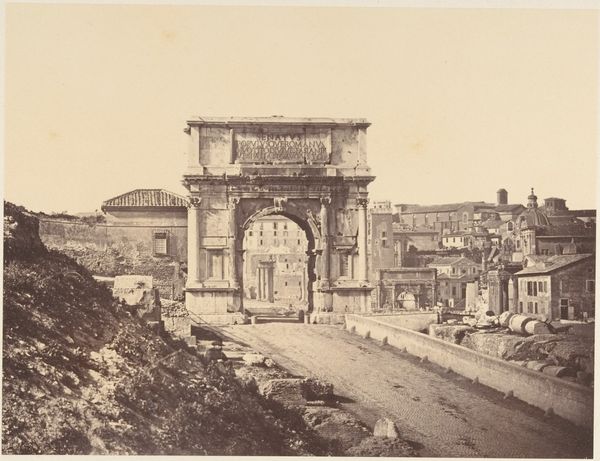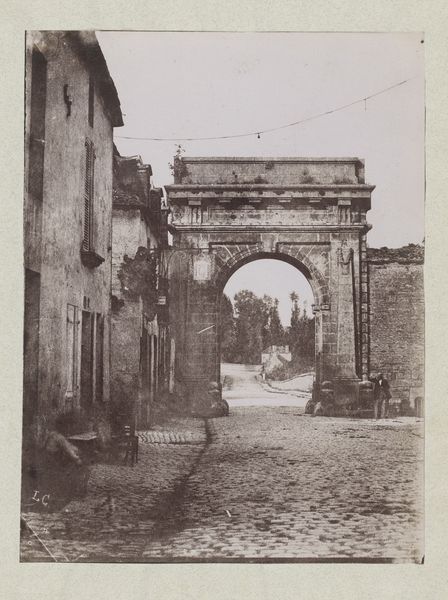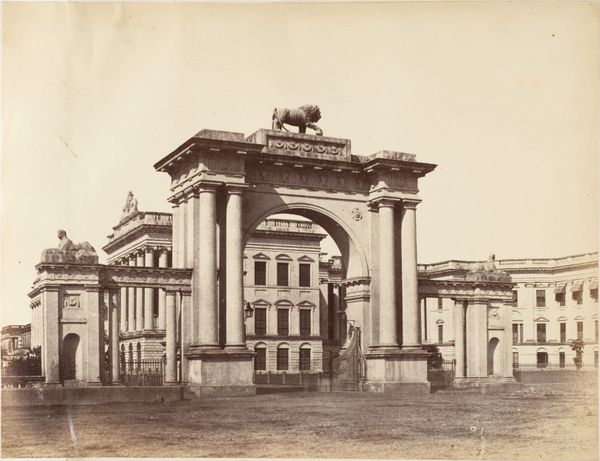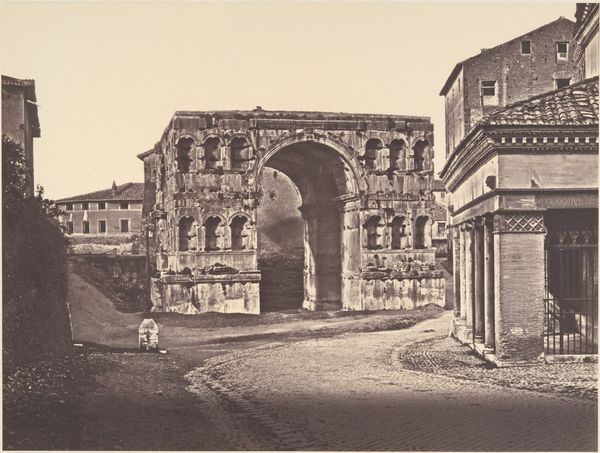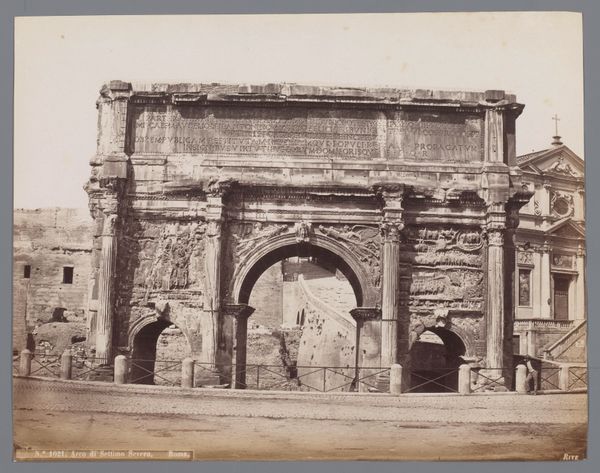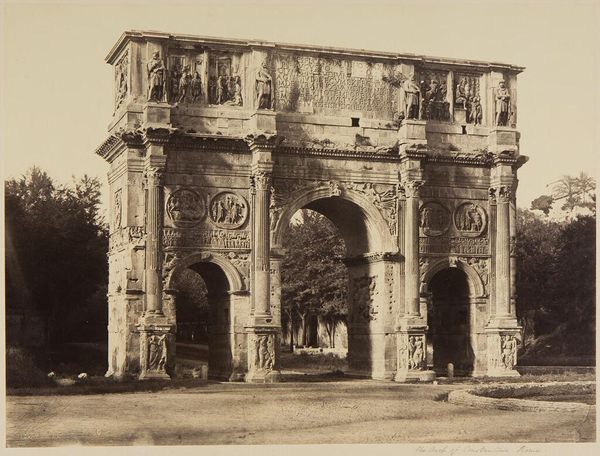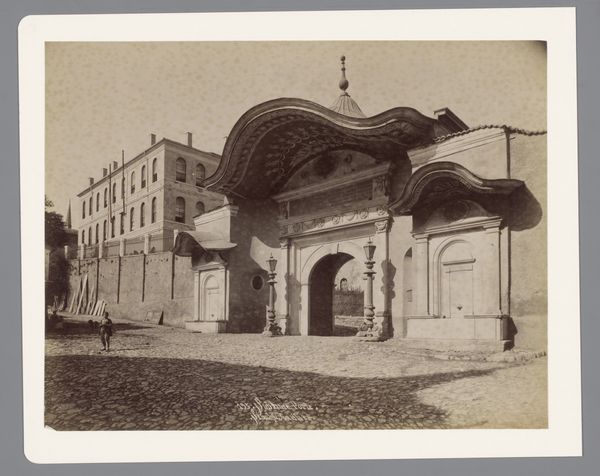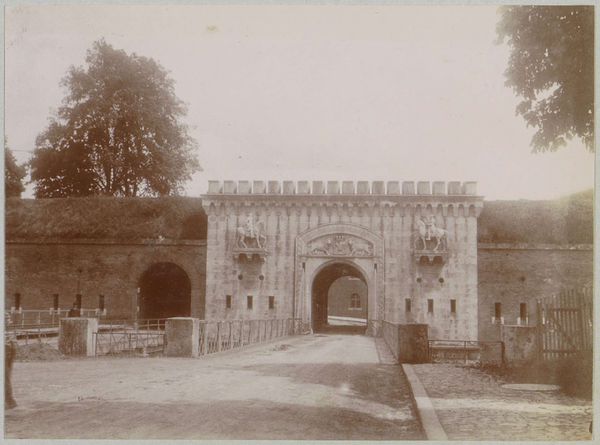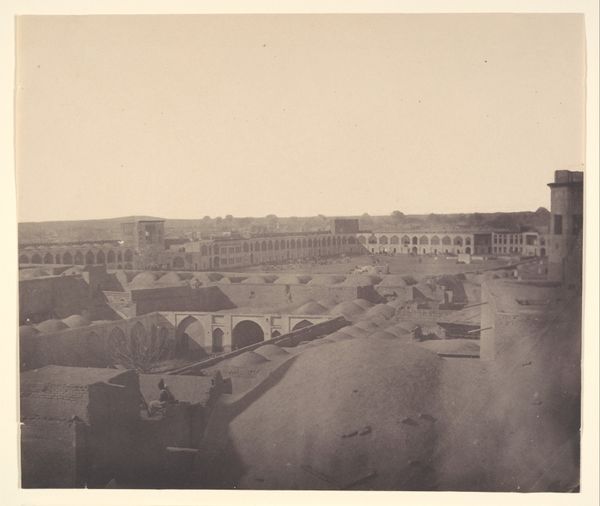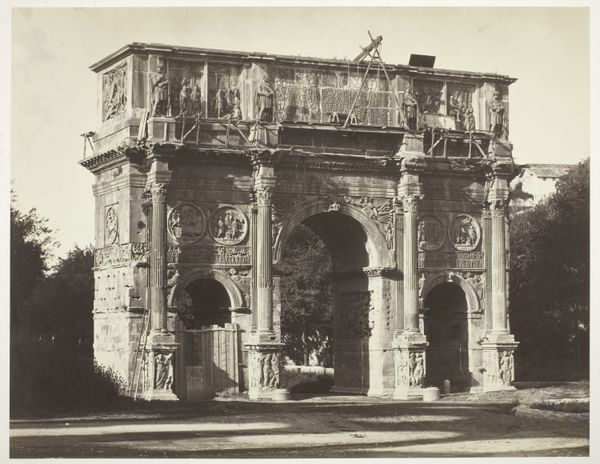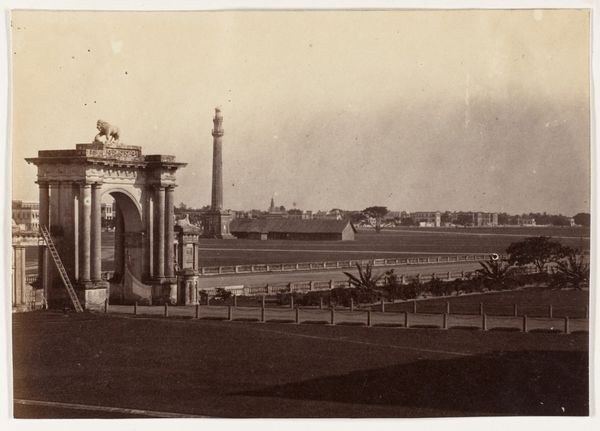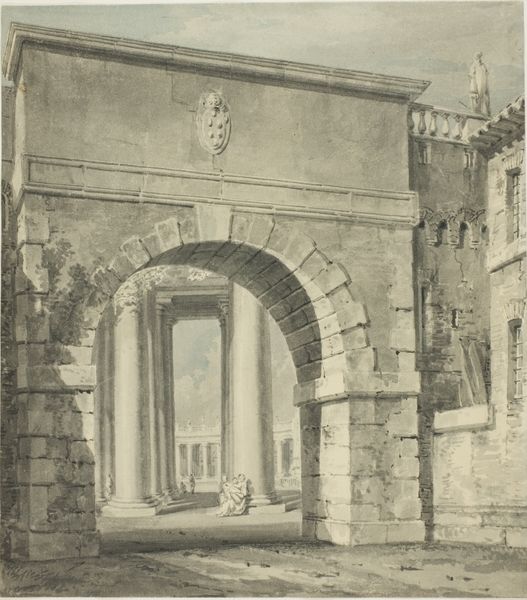![[N.E. Gate of Government House, Calcutta] by John Constantine Stanley](/_next/image?url=https%3A%2F%2Fd2w8kbdekdi1gv.cloudfront.net%2FeyJidWNrZXQiOiAiYXJ0ZXJhLWltYWdlcy1idWNrZXQiLCAia2V5IjogImFydHdvcmtzL2FjNzYwZDFhLWNjOTktNDQwZC1iOGE1LTk0OTQyM2IzMTJjZi9hYzc2MGQxYS1jYzk5LTQ0MGQtYjhhNS05NDk0MjNiMzEyY2ZfZnVsbC5qcGciLCAiZWRpdHMiOiB7InJlc2l6ZSI6IHsid2lkdGgiOiAxOTIwLCAiaGVpZ2h0IjogMTkyMCwgImZpdCI6ICJpbnNpZGUifX19&w=3840&q=75)
[N.E. Gate of Government House, Calcutta] 1858 - 1861
0:00
0:00
daguerreotype, photography, architecture
#
landscape
#
daguerreotype
#
photography
#
historical photography
#
orientalism
#
architecture
Dimensions: Image: 14.1 x 20.7 cm (5 9/16 x 8 1/8 in.) Mount: 33 x 26.4 cm (13 x 10 3/8 in.)
Copyright: Public Domain
Curator: I find this daguerreotype, titled '[N.E. Gate of Government House, Calcutta]' and created by John Constantine Stanley between 1858 and 1861, quite compelling. The work offers a look into the architectural landscape shaped by the British colonial presence in India. Editor: There's an imposing starkness to it. The cool tones and sharp geometry lend the scene a slightly alien and detached feeling, despite its clear documentary intentions. Curator: Yes, Stanley was capturing not just the structure itself, but the political message the building represented: an empire establishing its dominion through architectural grandeur. The Government House, now Raj Bhavan, was designed to reflect power and instill respect, or perhaps even awe. Editor: The strong linear quality and the symmetry further reinforce that power dynamic. The eye is immediately drawn to the central archway, then upwards to that rather self-important lion statue. The building is like a diagram illustrating hierarchy, but its sepia tones feel very muted and somber to me. Curator: Precisely! The choice of photography as a medium during this period was itself a political act. Photography provided the colonizers a means to categorize and document what they deemed as "their" territories, subtly promoting ideas of control and ownership to the audiences back home in Britain. Consider its placement within the Metropolitan Museum, effectively another form of "capture". Editor: It is definitely very calculated and staged but what's the purpose of those leaning ladders? Are they adding an element of surreal, even a slightly humorous sense of un-monumentality that somehow grounds the photograph and questions all the imperial grandstanding? Or are they just utilitarian objects getting in the way? Curator: Ah, the ladders could imply ongoing construction or renovations, inadvertently revealing the sustained effort needed to uphold such colonial projects, or perhaps it reveals that colonialism is still a work in progress. The photo speaks volumes about intention, as well as the unvarnished realities on the ground. Editor: In any case, examining the stark formal qualities really accentuates the overall feeling and how Stanley subtly crafted the message. Curator: I agree. Understanding its historical context allows for an appreciation of the intent to shape perceptions of power, governance, and cultural influence. Editor: Right. Analyzing the structural elements offers another potent layer, unveiling the visual mechanics through which power can be projected, reinforced, or questioned.
Comments
No comments
Be the first to comment and join the conversation on the ultimate creative platform.
